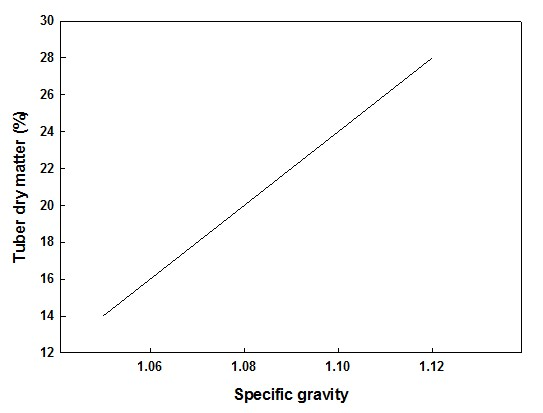Introduction
The specific gravity of potato tubers is an important quality criterion for processing potatoes. It is used as an estimate of the solids or dry matter content of tubers — the higher the dry matter content the lower the water content and the higher the specific gravity.
The ideal French fry is light in colour, crisp on the outside, fluffy or mealy on the inside and has a minimum of oiliness.
Similarly the ideal potato crisp is light in colour and absorbs a minimum of oil during frying.
High specific gravity potatoes are needed to produce such products.
Lower specific gravity potatoes are more costly to process. More water must be fried out of lower specific gravity potatoes to meet minimum quality standards. More potatoes must be processed to produce the same volume of product and the longer fry time results in potatoes absorbing more fat.
Measuring specific gravity
Although processors are primarily interested in tuber dry matter content, specific gravity is easier to measure and so is used to estimate dry matter content. Figure 1 shows that there is a close relationship between specific gravity and dry matter content of tubers.

Specific gravity is usually measured by weighing a sample of potatoes in air and then re-weighing the sample in water. The specific gravity is determined from the formula:
Specific gravity = (weight in air) divided by [(weight in air) - (weight in water)]
For example the specific gravity of a 3.5kg tuber sample which has a weight in water of 0.25kg is calculated as follows:
specific gravity = 3.5kg divided by [3.5kg - 0.25kg] = 3.5 divided by 3.25 = 1.077
Not all tubers from one plant will have the same specific gravity. Also specific gravity varies within the tuber. The weight-in-air/weight-in-water method gives an average specific gravity for the sample.

